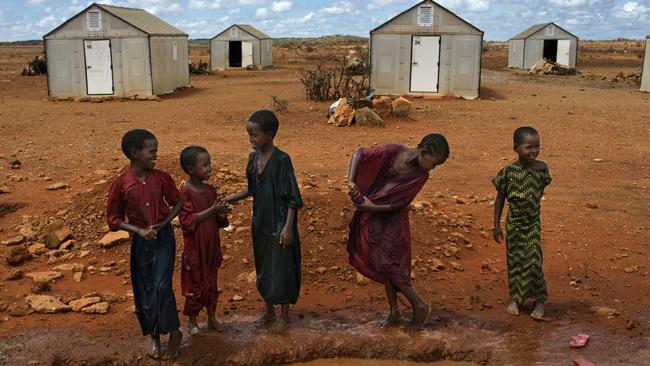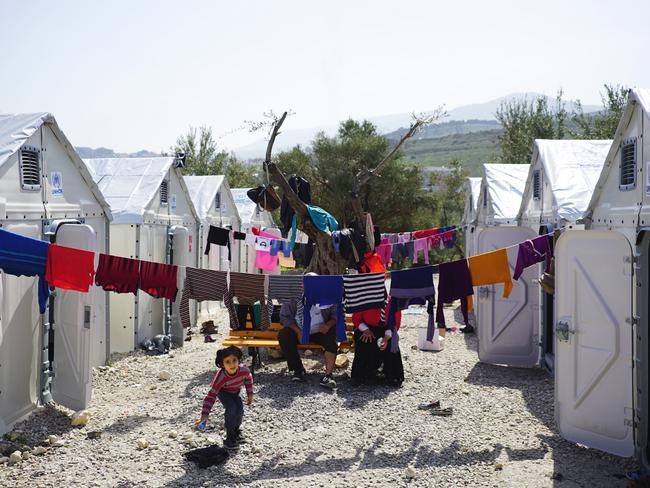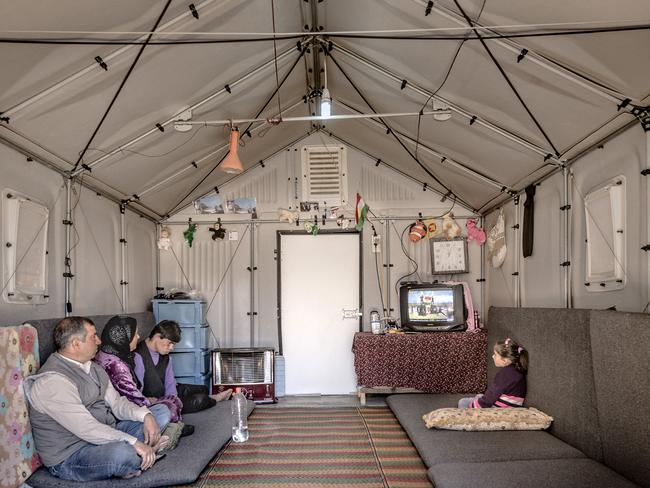Design-based solutions on how to solve world’s largest humanitarian problem
IT’S perhaps the world’s largest and most complex problem, but just five simple design ideas will be chosen from 640 submissions to help solve the crisis.

IT’S perhaps the most complex and challenging problem of our time, but more than 640 groups have come up with design-based solutions for how to help solve the global refugee crisis, with a winner to be announced next month.
An international jury of experts including designers, professors and refugee advocates is working to establish a shortlist from more than 640 entrants from 69 countries into the global competition run by What Design Can Do in conjunction with the United Nations High Commissioner for Refugees (UNHCR) and the Ikea Foundation.
On July 1, five designs will be chosen from the entrants that range from Icoon, a picture dictionary that helps refugees communicate when they can’t speak English to Centifloat, a 16-metre tube that inflates in three minutes and has space for 30 people to hold onto it at sea.
The public can vote for the best ideas until Thursday after which time the international panel will pick their favourite.
Ideas will be evaluated based on creativity, relevance, feasibility, scalability and potential impact with the winner announced at a global conference.
Each of the five best designs will get up to €10,000 and expert support to develop their ideas into feasible plans and working prototypes.
Ikea Foundation’s head of communications Jonathan Spampinato said the concept evolved out of a flat pack refugee shelter designed by Johan Karlsson and made by Ikea after he became focused on the refugee crisis in 2010.
After seeing people living in tents in camps for years at a time he wanted to come up with a more permanent solution and developed a basic shelter that was built in conjunction with UNHCR.

“It all breaks down to look just like an Ikea project when you’re done. It comes in two boxes, with a little wrench to put the whole thing together,” Mr Spampinato said, adding the shelter will last three to four years compared to six months for a tent.
Since March last year more than 10,000 have been rolled out and the Better Shelter company has been created. Now the UNHCR and the Swedish furniture giant’s foundation are hoping to take things a step further with the five next ideas to be chosen.
“One of the things we’re trying to do is experiment with ways that we can take democratic design and the principles behind it and bring those to the humanitarian sector,” Mr Spampinato said.
“Ikea is all about using democratic design to create a better life for the many customers with thin wallets. At Ikea Foundation we’re exploring the way we can create a better life, not just for the many but for the many that don’t have wallets at all. They’ll never be a customer,” he said.
UNHCR estimates there are 19 million global refugees in 2016, 60 per cent of whom live in urban areas.

Victoria Craw travelled to Almhult as a guest of Ikea.



